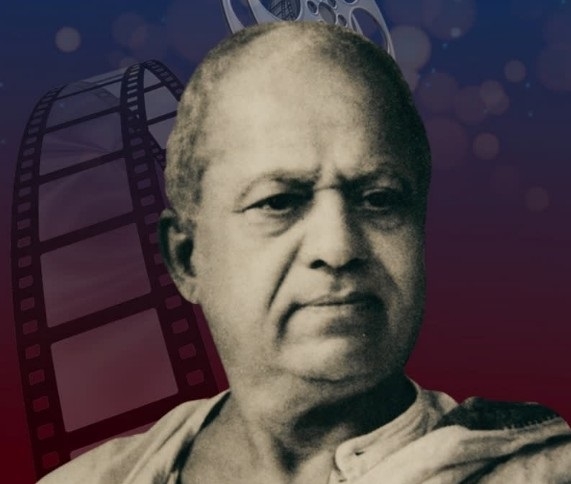Dadasaheb Phalke Birth Anniversary: How The Father Of Indian Cinema Overcame Odds To Make His First Film
Total Views |

Hyderabad : Dhundiraj Govind Phalke,
fondly remembered as Dadasaheb Phalke, marks his 155th birth anniversary today.
Known as the Father of Indian Cinema, Phalke was born on April 30, 1870, in
Trimbakeshwar near Nashik, Maharashtra. His monumental contribution to Indian
filmmaking laid the foundation of an industry that now ranks among the largest
in the world.
A Pioneer Of Indian Filmmaking
In 1913, Dadasaheb Phalke created India's
first full-length feature film, Raja Harishchandra, which earned him the title
of the father of Indian cinema. His pioneering vision introduced the art of
cinematic storytelling to the country, and he remained a driving force in the
industry for nearly two decades. To celebrate his legacy, the Government of
India instituted the Dadasaheb Phalke Award, the highest honour in Indian
cinema, presented annually to individuals for their outstanding contribution to
the film industry.
Early Education
Phalke was born into a family of
Sanskrit scholars. From a young age, he exhibited a keen interest in the arts.
He pursued formal education in painting at the JJ School of Art in Mumbai and
later continued his studies in sculpture, engineering, drawing, and photography
at the Maharaja Sayajirao University’s Faculty of Fine Arts in Baroda. His
multifaceted training laid a strong foundation for his cinematic ventures.
He initially worked as a professional
photographer in Godhra, Gujarat. However, tragedy struck during this period
when he lost his first wife and child to a plague outbreak. Despite personal
setbacks, he continued to explore various artistic and technical domains,
including setting up a printing press and travelling to Germany to learn about
advanced printing technologies.
What Inspired Phalke To Make Films?
Phalke's inspiration to make films
came after watching the European movie The Life of Christ in 1911. Deeply moved
by its storytelling and visual appeal, he envisioned creating similar films
rooted in Indian mythology and culture. His previous work with renowned artist
Raja Ravi Varma, particularly in illustrating Hindu deities, helped him
conceptualise how mythological characters could be portrayed on screen.
Determined to bring his vision to
life, Phalke took loans, pawned his wife's jewellery, and borrowed funds from
friends to travel to England. There, he studied filmmaking under British
pioneer Cecil Hepworth and returned with a Williamson camera and other
essential equipment.
Creating India's First Feature Film
Upon returning to India, Phalke began
work on Raja Harishchandra, choosing the mythological story for its strong
moral foundation. One of the biggest challenges was casting female roles, as
women acting in films was considered taboo at the time. Eventually, male actor
Anna Salunke was cast to play the female role of Queen Taramati.
After months of persistent effort
involving his family, friends, and collaborators, the film was completed in 6
months and 27 days. It premiered on May 3, 1913, marking the historic birth of
Indian cinema. Phalke directed, produced, and operated the camera for the film
himself.
Expanding The Film Legacy
After the success of Raja
Harishchandra, Phalke went on to experiment further with special effects and
trick photography. In 1917, he formed the Hindustan Film Company, under which
he made 95 feature films and 27 short films in a period of 19 years. Some of
his most well-known works are Lanka Dahan (1917), Shri Krishna Janma (1918),
Sairandhri (1920), Shakuntala (1920), and Guru Dronacharya (1923). His last
film, Gangavataran (1937), was also his sole sound film.
While Raja Harishchandra included men
playing female roles, Phalke was responsible for providing women with their
first opportunities in the cinema. In his second film, Mohini Bhasmasur (1913),
he cast Durga Bai Kamat as Parvati and her daughter Kamalabai Gokhale as
Mohini, which marked the first time women appeared in Indian films. Despite
social criticism, these women paved the way for generations of women who followed
them as actors. Phalke's own daughter Mandakini too appeared in movies such as
Lanka Dahan and Shri Krishna Janma. His wife Saraswatibai Phalke was India's
first female film editor, making a valuable contribution behind the camera.

